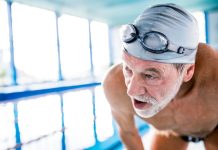
In a significant advancement for stroke rehabilitation, researchers from the University of Southampton have developed an electronic glove designed to aid stroke survivors.
This breakthrough tool is the brainchild of Professor Kai Yang and her team from the Winchester School of Art at the university.
How Does the Electronic Glove Work?
The glove, equipped with electrodes printed on its sleeve, works by stimulating the muscles and nerves of the paralyzed hand.
These electrodes send electronic impulses that create artificial movement, enabling stroke survivors to regain movement in their affected hand. This technology is pivotal in helping them rebuild muscle strength and enhance their mobility.
Design and Development: User-Friendly Rehabilitation
Professor Yang’s vision was to create a device that is easy for stroke survivors to use at home, considering that they often experience fatigue, making long rehabilitation sessions challenging.
The glove’s design allows users to engage in rehabilitation in manageable time blocks, aligning with the principle that more practice leads to improved muscle strength and mobility.
Emotional Impact and Life-Changing Experiences
The glove’s impact has already been profound for individuals like Dave Lea, who suffered a major stroke in 2015.
After years of immobility in his right hand, the glove has enabled him to move it again, marking a life-changing development. His wife, Sarah, expressed her emotional response, highlighting the potential of this device to transform lives.
Ranj Parmar, a coordinator at Different Strokes Southampton and a stroke survivor himself, emphasized the glove’s significant benefits in facilitating ongoing rehabilitation, even months after a stroke.
The ability to open and close the affected hand can be greatly enhanced with the glove’s repeated use.
Next Steps: Refinement and Accessibility
Professor Yang’s next goals include refining the glove’s design through feedback from more stroke survivors and conducting home usability tests. The plan is to have stroke survivors use the glove daily to maximize its benefits.
Following this phase, the team aims to seek regulatory approval and collaborate with manufacturers for large-scale production.
Vision for Widespread Use
The ultimate vision for Professor Yang and her team is to make this electronic glove accessible to all stroke survivors, significantly enhancing their recovery process and overall quality of life.
The team’s dedication to this innovative tool could usher in a new era of rehabilitation, offering renewed hope and independence to those affected by stroke-related paralysis.
If you care about stroke, please read studies that diets high in flavonoids could help reduce stroke risk, and MIND diet could slow down cognitive decline after stroke.
For more information about nutrition, please see recent studies about antioxidants that could help reduce the risk of dementia, and tea and coffee may help lower your risk of stroke, dementia.
Copyright © 2023 Knowridge Science Report. All rights reserved.



